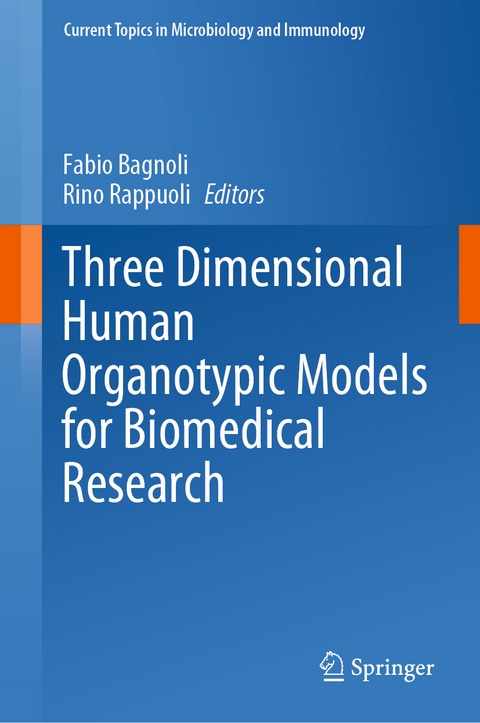
Three Dimensional Human Organotypic Models for Biomedical Research
Springer International Publishing (Verlag)
978-3-030-62451-4 (ISBN)
This edited volume discusses the application of very diverse human organotypic models in major areas of biomedical research. The authors lay a main focus on infectious diseases, cancer, allergies, as well as drug/vaccine discovery and toxicology studies. Representing a valid alternative to laboratory animals, these models are relevant for most areas of translational research. As the contemporary research shows, many human tissues can today be cultivated in vitro and used for several research objectives.
This book provides an unprecedented overview of recent developments in an exciting field of research methodology. It is a reference guide for scientists in both academia and industry. Readers can update their knowledge and get hands-on recommendations on how to set up an organotypic model in their lab.
Chapters 'Progress on Reconstructed Human Skin Models for Allergy Research and Identifying Contact Sensitizers' and 'Human Organotypic Models for Anti-infective Research' of this book are available open access under a CC BY 4.0 license at link.springer.com.
Fabio Bagnoli is discovery project leader of research & development programs at GSK. Research conducted by Fabio led to the filing of several patents as well as publications on various human pathogens published in important peer-reviewed journals. He has served as editor of several publications and is the coordinator of an industrial-academic effort on human organotypic models. He holds a PhD in Molecular and Cellular Microbiology from the University of Padova and conducted post-doctoral studies at Stanford University under the guidance of Dr. Stanley Falkow and Dr. Manuel Amieva.
Rino Rappuoli is Chief Scientist and Head External R&D at GSK Vaccines, based in Siena, Italy and Professor of Vaccinology at Imperial College, London. Prior positions: head of Vaccine R&D at Novartis, CSO of Chiron Corporation, head for R&D at Sclavo.
He earned his PhD in Biological Sciences at the University of Siena, Italy, and was visiting scientist at Rockefeller University and Harvard Medical School.
He is elected member of US National Academy of Sciences (NAS), the European Molecular Biology Organization (EMBO), and the Royal Society of London. Awards received: Gold Medal by the Italian President, Albert B Sabin Gold Medal, Canada Gairdner International Award, European Inventor Award for Lifetime Achievement, and Robert Koch Award. He was nominated third most influential person worldwide in the field of vaccines (Terrapin). He has published more than 700 works in peer-reviewed journals.
He introduced novel scientific concepts: genetic detoxification; cellular microbiology; reverse vaccinology; pangenome. Developed licensed vaccines: acellular pertussis containing a non-toxic mutant of pertussis toxin; first conjugate vaccine against meningococcus C; MF59, the first vaccine adjuvant after aluminium salts; meningococcus B; CRM 197 used as carrier in many conjugate vaccines.
Dr. Rappuoli is among the world scientific leaders dedicated to the sustainability of global health.Introduction: Rationale of using skin models in research.- Skin anatomy (human and animals for experimental research).- In vivo skin models.- In vitro human skin models (Skin equivalents vs skin explants).- Human skin models for studying cutaneous infections.- Skin animal models for pharmacological research.- Human skin models for pharmacological research.- Human skin models for allergological research.- Human skin models for cancer research.- Human skin models for vaccine research.
| Erscheinungsdatum | 22.05.2021 |
|---|---|
| Reihe/Serie | Current Topics in Microbiology and Immunology |
| Zusatzinfo | VIII, 265 p. 22 illus., 20 illus. in color. |
| Verlagsort | Cham |
| Sprache | englisch |
| Maße | 155 x 235 mm |
| Gewicht | 571 g |
| Themenwelt | Studium ► Querschnittsbereiche ► Infektiologie / Immunologie |
| Schlagworte | Cell Culture • Cutaneous infections • human skin model • in vitro skin model • in vivo skin model • skin animal model • Skin Equivalents |
| ISBN-10 | 3-030-62451-X / 303062451X |
| ISBN-13 | 978-3-030-62451-4 / 9783030624514 |
| Zustand | Neuware |
| Haben Sie eine Frage zum Produkt? |
aus dem Bereich


